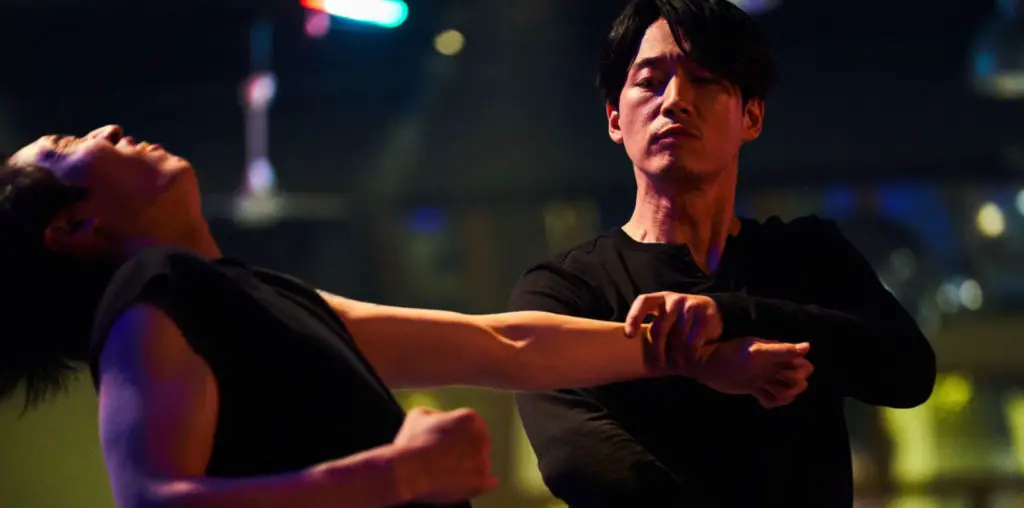
Lena (Alexis Bledel) states in “The Sisterhood of the Traveling Pants” (Ken Kwapis) that it is scientifically impossible for one pair of jeans to fit the varied body types of her and her three best friends. But, as the film affirms, the jeans in fact hug the hips of each of them and therefore must possess some kind of wonderful magic, appearing in and substantially changing their lives for a reason. Inspired by an Ann Brashares novel of the same name, “The Sisterhood of the Traveling Pants” follows four best friends during their first summer apart from each other. Timid artist Lena visits her grandparents in Greece; individualistic filmmaker-in-training Tibby (Amber Tamblyn) works at the local superstore Wallmons and shoots a documentary about losers; assertive Lolita-in-progress Bridget (Blake Lively) attends soccer camp in Mexico; and brilliant writer Carmen (America Ferrera) goes to see her father in South Carolina. Any preconceived notions or expectations of what their vacations will be like are quickly torn asunder as the jeans are mailed from one friend to the next, witnessing each girl’s emotional pain and maturity.
Ensemble films tend to feature characters that impress you as somewhat one-dimensional in a negative way, but at the same time their personalities and psychological “issues” are representative of universal themes. Tibby and Carmen are the strongest characters and deliver the most relatable stories. The former channels the attitude of the stereotypical cynical teenager who doesn’t want to have feelings; the latter carries the frustration and hurt of a young girl who doesn’t understand why her father left when she was a small child. Too scared to recognize the need for self-growth, they project their inner strength onto the jeans. Tibby meets a girl named Bailey (Jenna Boyd) who insists on helping with the documentary. They become sort-of-friends and Tibby’s outlook on life shifts dramatically when she discovers something about the inquisitive and outspoken twelve year-old. In the mean time, Carmen not only has to deal with the idea that her father (Bradley Whitford) is going to remarry a woman (Nancy Travis) who has two kids, but she also has to confront and communicate the anger and resentment she has towards her dad. Tibby and Carmen’s situations are more believable because the film doesn’t just tell us their details in dialogue or montage sequence. Their stories breathe with more life because they are portrayed by two actresses that express their characters skillfully and convincingly.
In contrast, Lena and Bridget’s histories have an unpolished design. For Lena, it is due to performance and for Bridget, it’s in the writing. Alexis Bledel is promising in the beginning of the film, when her lines are few and body language camouflaged. Her character’s “problem” is supposed to be that of breaking out of one’s introverted shell. Lena is supposed to become the confident swan that knows she is a confident swan. She meets a Greek hottie named Kostas (Michael Rady) who aids in this awakening. Lena’s transformation, however, is incomplete because there isn’t much in her screen presence that creates a firmer image of her former self. It’s difficult to believe someone has changed from A to B if we aren’t sure of their state of being A. We perceive Lena to be shy and awkward because Alexis Bledel has poor posture and appears to be soft-spoken and fragile. The moment she opens her mouth, though, we immediately think of her character Rory Gilmore from “The Gilmore Girls” and Lena gets lost in the middle. Bridget’s drawbacks are nearly entirely out of her hands. Her weakness does not result from bad acting; instead it is because of mediocre writing. Carmen knows the misery of growing up with a mostly absent father, Bridget has to learn how to become a woman literally without her mother. Her situation yields more for Blake Lively to work with than Bledel has with Lena, yet Lively succeeds only in giving the film an after-school-special agenda. Girls should not do things believing they will make them feel less empty.
Keeping in mind that “The Sisterhood of Traveling Pants” is based on a book whose target audience consists of middle school and high school kids, inconsistencies in character development might be forgiven, excused, understood, or at least taken with a grain of salt. The film bears coming-of-age undertones that resonate with females, particularly preteen and teenaged girls. Films like this one aren’t about being narratively perfect—they are about friendship and a world where there are limitless possibilities. “The Sisterhood of Traveling Pants” is ideal for a mother-daughter or best-friends-forever cinema excursion, but it may not be the most satisfying two hours for the rest of the movie-going public.
